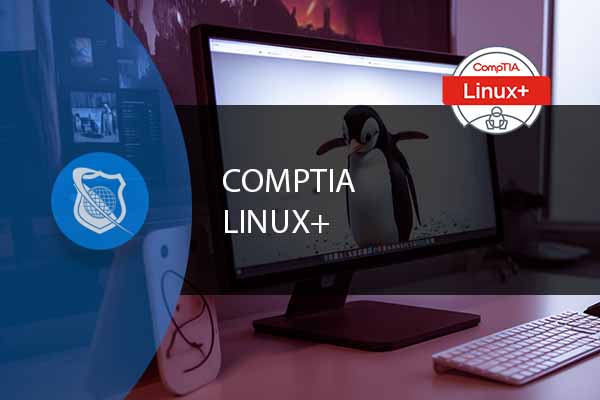Introduction to Linux GUIs
Embark on a journey through the rich and diverse world of Linux GUIs, where the freedom to choose extends to the graphical user interfaces (GUIs) you interact with daily. Linux GUIs cater to a wide spectrum of users, offering a range of experiences that cater to different preferences, system resources, and specific use-cases. Whether you’re a newcomer seeking simplicity and elegance, or a seasoned user in pursuit of efficiency and control, Linux has something to offer for everyone. This guide will take you through a comparative journey of the most popular Linux GUIs, exploring their features, benefits, and ideal scenarios, helping you make an informed decision for your digital adventure.
Network Administrator Career Path
This comprehensive training series is designed to provide both new and experienced network administrators with a robust skillset enabling you to manager current and networks of the future.
GNOME
GNOME is not just a desktop environment; it’s a statement of simplicity and elegance in the Linux ecosystem. Its design philosophy revolves around the focus on usability and accessibility, providing a clean and modern user interface that’s both intuitive and aesthetically pleasing. With a strong emphasis on streamlining workflows and minimizing distractions, GNOME offers a tranquil computing environment where simplicity and productivity go hand in hand.
- Features:
- Rich set of GNOME Extensions for enhanced functionality.
- Integrated search functionality for efficient workflow.
- Emphasis on accessibility and internationalization.
- Pros:
- Highly user-friendly and consistently updated.
- Large community support and extensive documentation.
- Adaptable through a wide range of extensions.
- Cons:
- Higher resource consumption compared to some other environments.
- Default design and workflow might not suit everyone’s taste.
KDE Plasma
KDE Plasma is a testament to the power of customization and versatility in the Linux world. As one of the most feature-rich and visually appealing desktop environments, KDE Plasma offers a unique blend of aesthetics and functionality. It’s a paradise for users who love to tweak and personalize every aspect of their digital workspace, offering an extensive array of configuration options and integrated applications that deliver a cohesive and comprehensive computing experience.
- Features:
- High level of customizability with numerous widgets and themes.
- A comprehensive suite of KDE applications that offer seamless integration.
- Cutting-edge technologies and innovations for a modern computing experience.
- Pros:
- Exceptionally customizable to fit every user’s preference.
- Visually stunning with powerful performance.
- Offers a traditional desktop experience with a modern touch.
- Cons:
- The abundance of features and settings can be overwhelming for new users.
- Slightly steeper learning curve compared to more straightforward environments.
XFCE
XFCE strikes a perfect balance between performance and aesthetics, making it a favorite among users who seek efficiency and simplicity. Known for its light resource footprint, XFCE provides a fast and responsive computing experience without compromising on the visual appeal of the desktop environment. It’s an ideal choice for those who wish to keep their system lean yet not devoid of a pleasant user interface and essential functionalities.
- Features:
- Lightweight and resource-efficient, ideal for older hardware.
- Modular design allowing for a high degree of customizability.
- Consistent performance and stability.
- Pros:
- Extremely light on resources, ensuring fast performance.
- Supports a wide range of plugins and addons for enhanced functionality.
- Easy to use, making it suitable for beginners and experienced users alike.
- Cons:
- The default interface may lack the visual appeal of more modern desktop environments.
- While highly customizable, it might require more effort to achieve the desired look and functionality.

Lock In Our Lowest Price Ever For Only $14.99 Monthly Access
Your career in information technology last for years. Technology changes rapidly. An ITU Online IT Training subscription offers you flexible and affordable IT training. With our IT training at your fingertips, your career opportunities are never ending as you grow your skills.
Plus, start today and get 10 free days with no obligation.
LXQt/LXDE
LXQt and LXDE are renowned for their ultra-lightweight nature, focusing on speed and efficiency without unnecessary frills. Tailored for users with older or less powerful hardware, these desktop environments ensure that performance is never compromised. They stand out for their no-nonsense approach to computing, providing just what you need for a functional and responsive experience.
- Features:
- Extremely lightweight, ensuring optimal performance even on older hardware.
- Simple and straightforward design for ease of use.
- Modular components for a tailored user experience.
- Pros:
- Ideal for systems with limited resources, breathing new life into old hardware.
- Fast boot times and responsive user interaction.
- Low memory and CPU usage, ensuring efficiency.
- Cons:
- Basic user interface lacking the visual sophistication of more modern environments.
- Fewer built-in features, requiring additional setup for a more comprehensive experience.
Cinnamon
Cinnamon offers a comforting balance between modern flair and traditional functionality. Originating from GNOME, it has evolved into a distinct desktop environment known for its elegance and user-friendliness. Cinnamon strikes a sweet spot for users seeking a modern, feature-rich environment without the overhead of the more heavyweight alternatives.
- Features:
- Intuitive and modern interface that is both attractive and efficient.
- Offers a balanced mix of features and performance.
- Strong focus on usability and ease of navigation.
- Pros:
- User-friendly, making it a comfortable choice for newcomers and experienced users.
- Offers a modern and polished user experience without excessive resource usage.
- High level of customizability with themes, applets, and desklets.
- Cons:
- Not as lightweight as XFCE or LXQt, but generally performs well on most hardware.
- Some users might prefer more minimalistic or advanced environments.
MATE
MATE carries forward the legacy of the classic GNOME 2 desktop, preserving the traditional desktop metaphor while integrating modern features and improvements. It’s the perfect refuge for users who long for the stability and familiarity of GNOME 2, yet desire an up-to-date and actively maintained environment.
- Features:
- Familiar and traditional desktop layout, offering ease of use and stability.
- Lightweight and efficient, ensuring smooth performance on most hardware.
- Actively maintained with regular updates and improvements.
- Pros:
- Provides a classic desktop experience that’s both reliable and user-friendly.
- Low on resource usage, making it suitable for a wide range of systems.
- Offers enough customizability to make the environment feel personal.
- Cons:
- The traditional interface might seem outdated to users who prefer more modern aesthetics.
- Might lack some of the advanced features or visual effects present in newer desktop environments.
CompTIA Linux+
Unlock the power of Linux with our comprehensive online course! Learn to configure, manage, and troubleshoot Linux environments using security best practices and automation. Master critical skills for the CompTIA Linux+ certification exam. Your pathway to success starts here!
Comparison and Conclusion
In the diverse landscape of Linux GUIs, each environment offers its unique blend of aesthetics, functionality, and performance. Your choice might depend on your specific needs, preferences, hardware resources, or simply your taste in user interface design. We encourage you to explore these environments firsthand, as the true essence of Linux lies in the freedom to tailor your computing experience to fit your individual style.
Remember, the journey doesn’t end here. The Linux community is vibrant and supportive, and there’s always something new to learn, customize, or explore. So dive in, experiment, and find the Linux GUI that feels like home to you!
Below are the links where users can download or learn how to install these popular Linux GUIs. Note that most Linux distributions come with a default desktop environment, but you can often install others through the distribution’s package manager.
GNOME
- Website: GNOME
- Download/Install: Typically pre-installed on many Linux distributions. For installation or switching to GNOME, refer to your specific distribution’s documentation or package manager. For Ubuntu, for example, you can install GNOME by running
sudo apt install gnome-shell.
KDE Plasma
- Website: KDE Plasma
- Download/Install: Often available for installation from your distribution’s package manager. For Ubuntu-based distributions, you can install it by running
sudo apt install kde-plasma-desktop.
XFCE
- Website: XFCE
- Download/Install: Available in most distribution repositories. For example, on Ubuntu-based distributions, you can install XFCE by running
sudo apt install xfce4.
LXQt/LXDE
- LXQt Website: LXQt
- LXDE Website: LXDE
- Download/Install: Both are available in most distribution repositories. For LXQt on Ubuntu-based systems, you can install it by running
sudo apt install lxqt. For LXDE, usesudo apt install lxde.
Cinnamon
- Website: Cinnamon
- Download/Install: Initially developed for Linux Mint but available for other distributions as well. On Ubuntu-based systems, you can install it by running
sudo apt install cinnamon-desktop-environment.
MATE
- Website: MATE
- Download/Install: Available in the repositories of most distributions. For Ubuntu-based systems, install it by running
sudo apt install mate-desktop-environment.
Please note that while these commands and links are commonly used for installations, the exact process can vary based on your specific Linux distribution and its version. Always refer to the official documentation or community forums of your distribution for the most accurate and up-to-date information.
Frequently Asked Questions Related to Linux GUIs
What is the difference between a Desktop Environment and a Window Manager?
A Desktop Environment (DE) is a complete software suite that offers a graphical user interface along with a range of integrated applications and services. A DE includes a window manager, but also includes other components like a file manager, a panel, and various other tools and utilities. In contrast, a Window Manager (WM) is a more lightweight program that solely manages the placement and appearance of windows within a desktop.
Can I use more than one Desktop Environment on the same Linux installation?
Yes, you can install multiple Desktop Environments on the same Linux installation. You can choose which one to use at the login screen. However, be mindful that having multiple DEs can consume more disk space, and sometimes settings or themes from one environment can interfere with another.
How can I switch from one Desktop Environment to another?
To switch Desktop Environments, you typically log out of your current session, and then at the login screen, you can select a different environment before logging back in. The method to choose the environment at the login screen depends on your display manager (the login screen software).
Are there performance differences between different Desktop Environments?
Yes, there are performance differences. Environments like KDE Plasma and GNOME are known for offering rich features and visual effects, which can demand more system resources. On the other hand, XFCE, LXQt/LXDE, and MATE are more lightweight and generally perform better on older or less powerful hardware.
How can I customize my Linux Desktop Environment?
Customization options vary with each Desktop Environment. Generally, you can change themes, icons, and layouts through the system settings. For more advanced customizations, you can use third-party applications or tweak configuration files. KDE Plasma and GNOME have extensive customization options through widgets, extensions, and downloadable themes, whereas XFCE, LXQt/LXDE, and MATE offer a more traditional approach to customization.


























